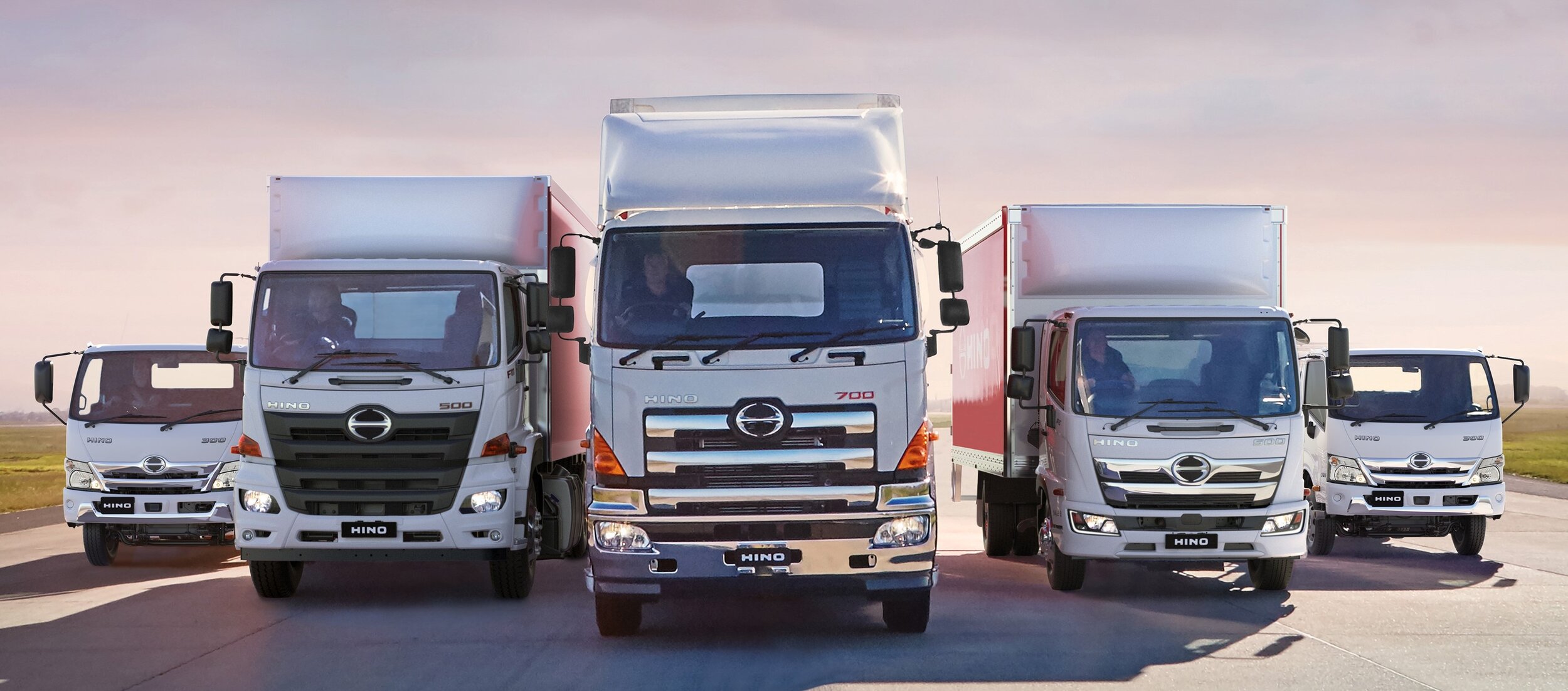Hino 300 Series - Part 4 The Hybrid
The new Hino 300 Series Hybrid
EURO 6 EMISSIONS AND
CLASS LEADING SAFETY FOR HINO HYBRID
The new 2020 Hino 300 Series Hybrid features a series of changes to the hybrid system, aimed at improving fuel efficiency and reducing emissions.
“This is currently Australia’s only light-duty hybrid electric-diesel truck, and is now the first Japanese-manufactured light-duty truck in Australia to meet Euro 6 exhaust emissions standards,” said Daniel Petrovski, Manager of Product Strategy for Hino Australia. “The updated Hino Hybrid delivers an even cleaner, more efficient transport solution for customers.”
The Hybrid version of the 300 Series reflects customers changing needs, where they are increasingly demanding more environmentally friendly options. This truck is an excellent solution that reduces fuel consumption and the carbon footprint.
Hybrid models are available in four variants - from the 616 Standard and Wide Cab car-licenced models through to the 716 Wide Cab and the 916 Wide Cab, which has a maximum Gross Vehicle Mass (GVM) of 8.5 tonne.
Euro 6 emissions standards are achieved by using a combination of the well-proven and reliable Exhaust Gas Recirculation (EGR) and Hino Diesel Particulate Active Reduction Filter (DPR) system, combined with the Hino Selective Catalytic Reduction (SCR) system.
This combination of established exhaust emissions solutions is already found in larger Hino 500 Series Standard Cab models, where it has proven its reliability while also reducing engine exhaust emissions.
Updated Hybrid System
The new 300 Series Hybrid includes an updated hybrid system, with changes to hardware and operational software. The battery itself has been reduced in size but retains its 6.5 Amp Hour (AH) rating.
The Power Control Unit (PCU), which encompasses the battery, inverter, Engine Control Unit (ECU) and DC-DC Converter, has been redesigned for lighter weight and smaller packaging, resulting in a PCU weight of 85kg, down from 113kg.
The Hino Hybrid retains its parallel electric diesel design and continues to use the Toyota Group-sourced nickel metal hydride battery, which has been used in over 15 million hybrid vehicles worldwide. The engine and transmission have been also been improved with the aim of further fuel consumption reductions.
The Hino N04C-WR four cylinder common-rail injected turbo-diesel engine produces 150hp (110kW) and 470Nm of torque which is delivered in combination with the electric motor from a very low 1000RPM.
“When maximum torque is available at such low rpm, fuel use is minimised,” said Mr Petrovski.
The revised automated transmission is now a six-speed instead of the five-speed in the previous model and is coupled directly to the electric motor. The additional gear and the wider ratio spread enable the engine to spend longer in its most efficient rpm, resulting in maximum driving efficiencies.
The Hybrid models are differentiated by a splash of blue across the grill
The hybrid system continuously seeks to supplement the diesel power delivery with electric power into the driveline. It constantly switches between diesel engine drive only, a combination of both electric motor and diesel engine drive, and can also utilise electric drive only in certain situations.
When the hybrid system is delivering drive from both the N04C-WR engine and the electric motor, the power delivery is balanced by the hybrid ECU.
“Charging the Hybrid batteries from the regenerative braking system in the 300 Series Hybrid is key to the success of the Hino Hybrid,” said Mr Petrovski.
The charging of the batteries through kinetic energy capture also acts as an effective auxiliary brake and slows the vehicle. The auxiliary braking of the Hino Hybrid dramatically increases brake pad life and further reduces whole of life costs of the truck. The electricity which is stored into the battery is then used on the next take off and/or acceleration.
Hino Hybrid light-duty trucks have been assisting customers to not only save money but also reduce their carbon footprint in Australia since 2007. There are currently more than 600 in operation on local roads.
Applications are varied and include dry van and refrigerated delivery applications, many of which are in high duty cycle applications operating in city and metro areas on a two driver rotating shift. There are also Hino Hybrids operating in city and regional council vocational applications such as rear loader waste, parks and gardens service, and tippers.
In both independent and Hino local testing of the previous model, the Hino 300 Series Hybrid has proven fuel efficiency improvements of 21 percent when compared to its diesel counterpart. One would expect the upgrades and refinements to the new model to achieve even better results.
As with the rest of the new Hino 300 Series vehicles, the Hybrid models incorporate all the safety features found in the other models.
The new Hino 300 Series Hybrid is now available at Hino dealerships nationwide, with more information available at www.hino.com.au.
The Hino Truck range
Tomorrow: Wrap up.
More Blog Posts You Will Love
More From the News
Got something to say? Say it here!
truckinwithkermie.com is for YOU and about YOU. We’d love to hear your stories. There are a number of ways to get in touch with us:
kermie@truckinwithkermie.com
(+61) 0418 139 415













